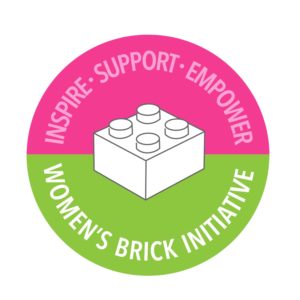Diverse LEGO Minifigure Petition
Sign The PetitionMaking all skin tones equally accessible is an important step in addressing the colorism and racism inherent in the use of yellow to represent a default of light-skinned peoples.

Bias
Bias is absorbed, consciously and unconsciously. Yellow minifigs teach us that light skinned people are the default and the dominant population.
To light skinned people, yellow is seen as an equivalent color for themselves. By creating only yellow minifigures, white children encounter only their own kind and brown-skinned children feel completely left out.
When LEGO uses yellow, they are stating the idea that yellow is light, light is dominant, and confirming the societally accepted concept that light is better than dark.

First created in 1975, LEGO minifigures were originally chosen to be yellow in order to promote the idea of racial neutrality. LEGO, at one time, explained on its website: “We chose yellow to avoid assigning a specific ethnicity in sets that don’t include any specific characters. With this neutral color, fans can assign their own individual roles to LEGO minifigures.” The page on LEGO’s website where this was found is no longer active, perhaps because they no longer believe this to be true. However, if this is the case, their products have not been updated to reflect their change in belief.
“We need to ask ourselves if all children encounter representations of themselves in what they play with or read, and if they ever encounter representations of children who aren’t like them? When one color is dominant, it sends clear messages to both the privileged and the oppressed that the story isn’t changing for anyone. This story hurts us all.” (Why toys need to reflect racial diversity: here’s lookin at you, Lego!)
It’s no secret that light colors are symbolically good and dark colors are symbolically bad, but we need to pause to consider the deeper story this persistent symbolism teaches our children, particularly in regards to race. By making broad and intentional efforts to redefine the subtle stigma attached to the colors used to represent skin color, toy companies have the opportunity to tell children of all racial backgrounds a story of value for everyone, not just the light-skinned hands that have traditionally held the power.” ~Between Worlds, 2014
Equivalency
Bias is absorbed, consciously and unconsciously. Yellow minifigs teach us that light skinned people are the default and the dominant population.
White people are comfortable seeing themselves in a yellow minifigure and because of privilege and bias, don’t consider that others may not.

Here’s the problem: Yellow is a notably light color. And while many with lighter skin might see themselves in a so-called “neutral” yellow minifig, it’s hard to believe that people with darker skin have embraced this viewpoint, especially in recent years when minifig facial features have become much more detailed and colorful, creating contrasts that clearly designate yellow as a lighter skin tone. “LEGO figurines reflect the norms of a dominant culture under the guise of neutrality,” argues writer Samantha Allen. “The company’s history with race typifies the way in which a claim to neutrality is often used as a smokescreen for a deliberate choice to exclude.”
“As a woman of color, I don’t feel that the yellow mini figure represents my brown skin. Having grown up watching the Simpsons cartoon, like billions of other people around the world, white people in that show, and others like it are represented by yellow. Black and brown people are represented with black and brown characters.
The official LEGO position on this, that yellow represents all colors, while also manufacturing different color minifigure heads for licensed parts, is confusing and quite frankly, racist. It fails to acknowledge the usage of yellow in popular culture around the world as a white construct. It is this ignorant oversight that maintains the exclusion of diverse people in the Lego community. I understand that systemic bias and belief systems are very hard to overcome and change for the better. However, manufacturing minifig heads of different colors would be a simple way to apply inclusive practices, and positively impact millions of people around the world.”
Jyoti Patel, LEGO Serious Play Facilitator Scientific American Blogs, 2015
Minifigures are very similar to emojis in that yellow is the default, and even when skin colors are technologically possible, they are not universally available or used. Research has shown that white emoji users overwhelmingly use the yellow default and people of color do not.
As one Adult Fan of LEGO (AFOL) recently stated, “I’m white and I can easily find parts to build myself as a yellow minifig. Even though my skin isn’t yellow, I can still see a rough approximation of myself reflected back at me. I don’t know that a black person can do the same.” The idea is that everyone, regardless of color, should have an equally easy way to see themselves in the LEGO parts available.
“For people who are used to thinking of their skin as the default, acknowledging whiteness in their digital hand gestures can feel deeply uncomfortable.”
“Whenever we sent that yellow high-five, we were reminded that brown and black hands were not an option.”
Neutrality
Bias is absorbed, consciously and unconsciously. Yellow minifigs teach us that light skinned people are the default and the dominant population.
Even though the minifigure was developed during the 1970s when there were only 9 colors in the ABS color palette, there are plentiful options now for more appropriate, respectful, and accurate skin tones. Yellow was certainly a better option than white, but times have changed. LEGO can no longer hide their racism behind the excuse for limited materials.
Because LEGO was developed in Denmark, and the original primary market was Europe, it may have been thought that yellow represented the dominant pale-skinned people of Europe. The emphasis on white people and white culture is still evident in the location of stores today. LEGO has the highest number of stores in North America and Europe and has been relatively slow to expand to Asia, Africa, and South America.
This Eurocentrism is also evident in the choices made in the Architecture theme, which could be a way to include the cultures and peoples of the world, but is still heavily focused on the Western world.
“The yellow-headed minifigure was a conscious choice,” says Michael McNally, LEGO’s brand-relations manager. “Because of their ethnically neutral skin color, LEGO people can be any people – in any story, at any time.” When asked how many minority minifigures are there, This was his reply: “I dunno,” says McNally. “Nobody here has ever bothered to count, because nobody cares.”

Figure 1. Geographic distribution of Architecture set subjects.
Coding
Yellow minifigures are coded as white. The stylized facial features of most minifigs are understood as being equivalent to white. When People of Color are represented, the minifigures are often changed in some way to reflect negative stereotypes of those particular ethnicities.
Asian Eyes
Those changes most often appear in the way the eyes, nose, or skin are represented.
Let’s take a look at how Jing Lee and Pippin Reed are represented. They are both from the same theme (Orient Expedition) and year of production (2003).
Jing Lee (on the left, who is supposed to be “Oriental”) has almond shaped eyes while Pippin (who is supposed to be white) has the classic round eyes.

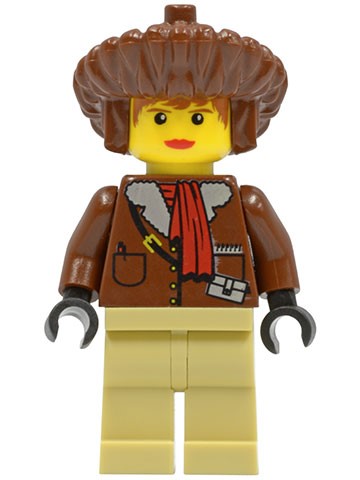
Figure 2. #3382 Jing Lee and #7412 Pippin Reed, 2003 Orient Expedition theme
More recently, this is evident in the 2020 Mulan sets that use a new type of facial design labeled as ‘Asian eyes’ on Bricklink, the 3rd party LEGO marketplace now owned by LEGO.
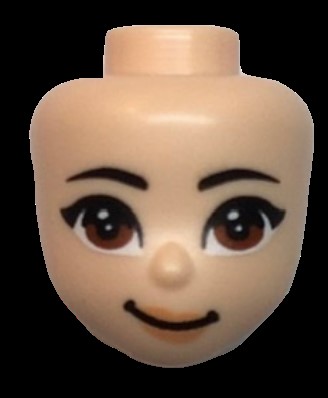


Twenty years later, Western sets were introduced, which included “Indian” characters with noticeably different style of eyes, a nose, and expressions that are not as neutral as the “white” characters in the same theme (Figure 5).
This was the first and one of very few instances in which LEGO gave their characters noses.
The fact that LEGO felt the need to include a nose on the “Indians” but not on contemporary yellow figs from the same theme clearly suggests that LEGO never believed yellow by itself was representative of all skin colors.
Instead, they needed to significantly change the face paint of minifigures to represent people of color, while other “white” minifigures had the classic eyes and no nose.




Figure 5. Indian Female, Indian, Indian Chief, and Sheriff, 1997-2002

Figure 4. #215 Red Indian, 1977
Modified Nose
In 1977, LEGO introduced its first “Indian” characters in Set #215, Red Indians seen in Figure 4.
The red skin color is highly offensive.
The introduction of brown minifigures
If yellow was neutral, then why were the first Black characters not yellow?
Lando Calrissian, a prominent black character in the Star Wars franchise, was notably missing from Star Wars sets for many years. In 2003, he appeared as a brown character. This is especially notable because this occurred before the shift of other Star Wars and other intellectual property (IP) characters shifted to more realistic skin tones. Black was now differentiated from yellow, further enforcing the idea that yellow was not neutral and that it was equivalent to white.

Figure 6. Leia, Luke, Han, in yellow, Lando in brown in #10123 Cloud City
Value
The value of using a range of skin tones is evident in other themes like Duplo, Friends, and Brickheadz. It is hard to believe that LEGO thinks yellow is neutral when other themes have always used a palette of skin tones.
The first set of multiracial figures was actually back in the 1980s with the release of Duplo Education sets that included a range of ‘international’ figures.
Even then, LEGO has portrayed people of color as other: ‘people’ are light skinned, ‘world people’ are dark skinned.



Figure 9. Minidolls of the five main characters of the Friends line. The 2012 version (top row) compared to the 2018 version (second row)
“The yellow-headed minifigure was a conscious choice,” says Michael McNally, LEGO’s brand-relations manager. “Because of their ethnically neutral skin color, LEGO people can be any people – in any story, at any time.” When asked how many minority minifigures are there, This was his reply: “I dunno,” says McNally. “Nobody here has ever bothered to count, because nobody cares.”
The Friends line has consisted of multiethnic characters since their introduction in 2011/12. Their ethnic differences were emphasized with an update in 2018. In this update, facial features, skin color, and eye color and shape were changed in order to enhance the play experience and the realism of each Friend’s personalities.
If this is appropriate and desirable for some product lines, why is it undesirable or inappropriate for the others? It is hard to defend yellow as being neutral if it is not used in all instances where it is not strictly based on IP; this variation suggests that LEGO already knows that yellow is not an equitable way of representing all kinds of skin color.
In the Brickheadz line, the brick built figures have always been based on fleshtones. In the build-your-own type kits, there are multiple options for skin and hair colors.
It seems that when brick building yourself, multiple color options are suitable, so why not with minifigure parts?
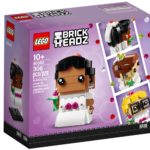
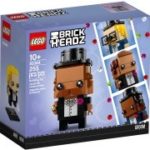
Figure 10. #40383 Wedding Bride and #40394 Wedding Groom. Both sets include parts for three different skin tones and hair colors.
Parts
Parts that could be used to build ethnically diverse minifigs are extremely limited, and are often disrespectfully used.
There are, however, only a few styles that are available, even for something as iconic as the afro. The afro was first introduced in 2010 in red as part of Collectible Minifig Series 1(CMF) Circus Clown. Despite the afro piece being in 7 sets, 6 of them are in blind polybags, special edition sets, or in non-natural colors. Only one of them is in a ‘regular’ set, which cost $100. This is not an easily accessible part for most LEGO fans.

Dreadlocks are a traditional black hairstyle, and hold special significance within black Caribbean cultures. White appropriation of dreadlocks has long been a contentious issue, and yet the only available dreadlock parts come from specifically white characters. “Despite the fact that white people culturally appropriate Black hairstyles, Black people themselves are still judged, criticized, and shamed for reclaiming their own cultural identity.” Anti Racism Daily, 2020 To not only shut out black-coded characters from a traditionally black hairstyle but also designate that style for specifically white characters is highly disrespectful.
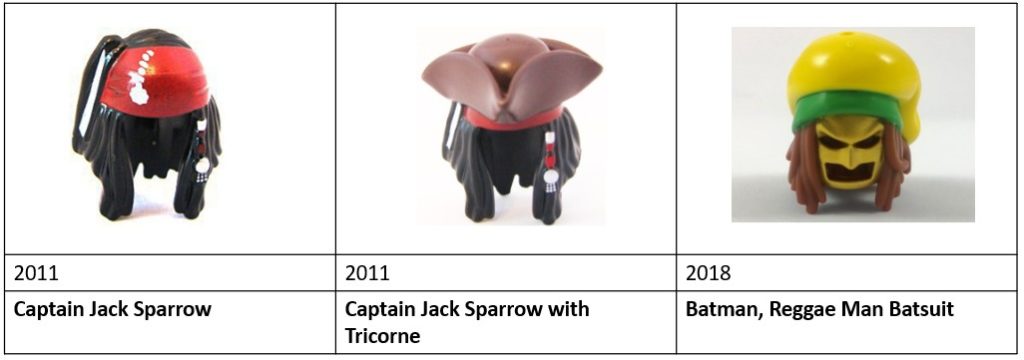
Another hairstyle that is ubiquitous in the real world, but is rare in the LEGO world is the braided style used by Shuri from Black Panther and Patty Tolan from Ghostbusters.
This is a traditional hairstyle for black characters, but once again, it is difficult to access because it was only available in 2 sets that are now out of production.
There are several other examples of hair pieces that are given the same treatment of being rare, difficult to source, and/or are disrespectfully used.

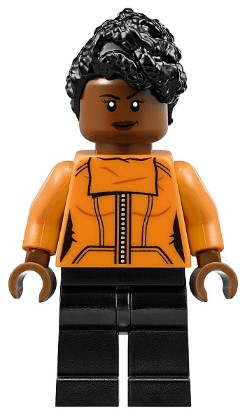
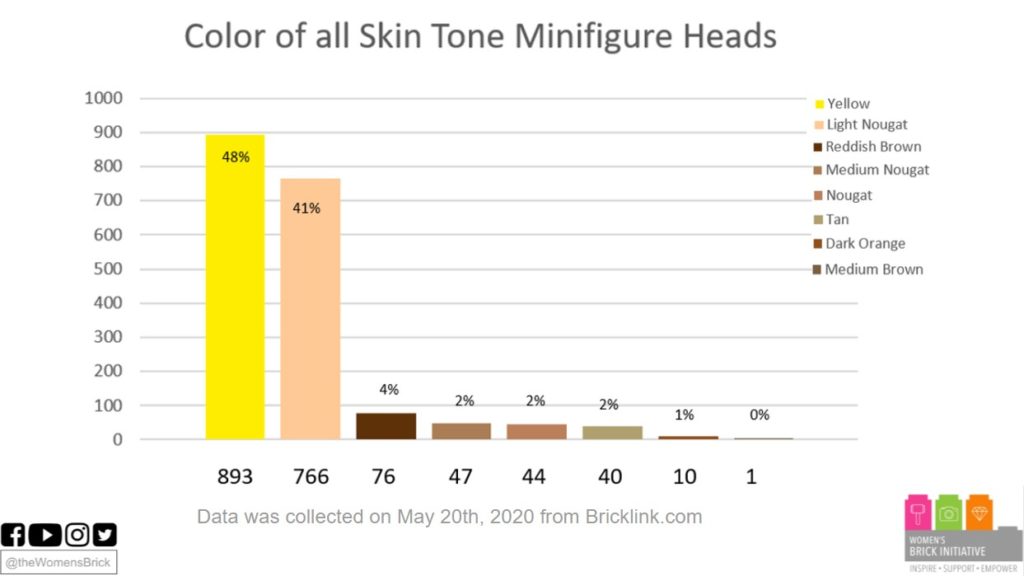
For those that want to make minifigures in colors other than yellow or light nougat, there are considerably fewer options.
Based on a May 2020 analysis by WBI of minifig heads available on Bricklink, of the 1,877 minifigure heads available, 89% of them are coded for white people.
Colorism is discrimination based on skin color and it is clear that minifigs of lighter color are given preference over those with darker skin color.
Let’s take a closer look at one of these groups: female heads in reddish brown. As of 2020, there are only 10 different heads made, and these prints reveal another disturbing trend: an unusually high prevalence of angry faces. Of the 10 heads that have been made, 7 have angry faces.
As mentioned above, the very first brown female head was printed 10 years after the first male (in 2003) , and was for a space alien (the one with purple eyes, bottom left corner in the figure below). It would be another year before a head was printed to represent a brown skinned human.
Most of these heads (and their minifigures) are almost completely unavailable on the secondary market, making them both rare and expensive.

Builders
Builders want variety in their minifigs and they find it difficult to find the variety they are looking for. We want and need more diversity in minifigs and the distribution and availability of parts makes this unnecessarily challenging.
As seen in the graph above, there are far fewer non-white minifig options to begin with. Furthermore, even if they were plentiful, it is not easy to convert any torso into a minifigure of color. Many of the printed torsos include a patch of skin color, most often at the neckline, so swapping out a yellow head for a brown one does not solve the issue of still having a yellow neck.
With the exception of when a character is wearing gloves, minifigures usually have the same color of hands as head. Exchanging a yellow or light flesh head for a different flesh town would then mean that you would need hands to match, and they are rare and expensive.

For those who are trying to show diverse minifigs in their models, there are significant additional costs to making this possible.
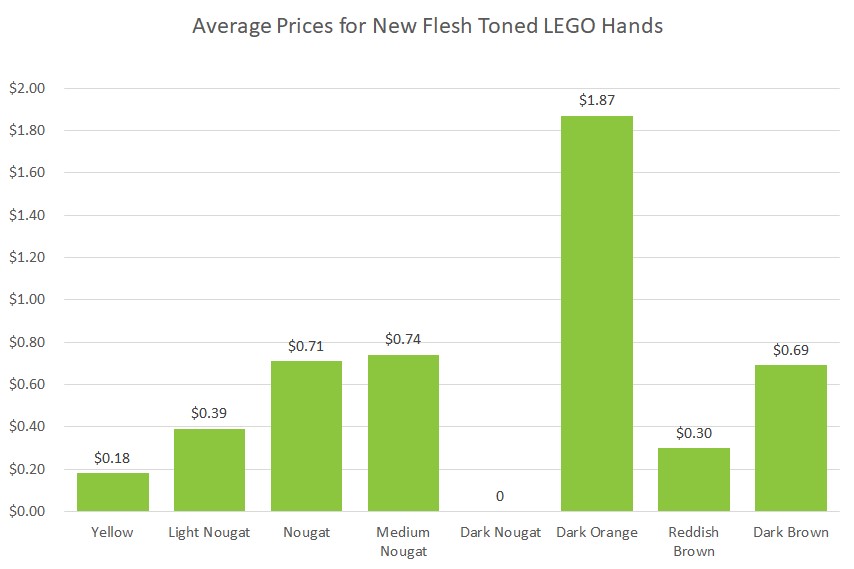
“In the educational programs that I ran for 16 years using the medium of LEGO, there was never enough brown and black LEGO heads for the kids that identified this way. Regardless of the hundreds of thousands of LEGO Minifigures we purchased over the years, we never had enough so that kids could build themselves out of LEGO. If the goal is to allow kids to build the world they want to see, shouldn’t there be enough LEGO minifigures that look like them to showcase?” Jeff Harry, former LEGO STEM Educator.
This is what builders have to say:
We can’t say it better than LEGO has said it themselves
“We are committed to having a positive impact on children and the world they will inherit. That includes contributing to a positive, inclusive digital environment free from hate speech, discrimination and misinformation.”
30 June 2020 Social Media Paid Advertising Pause Press Release
